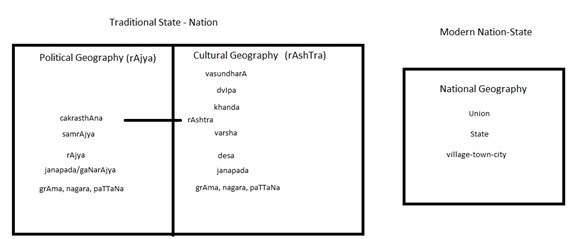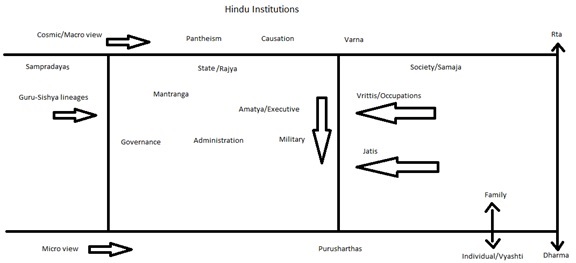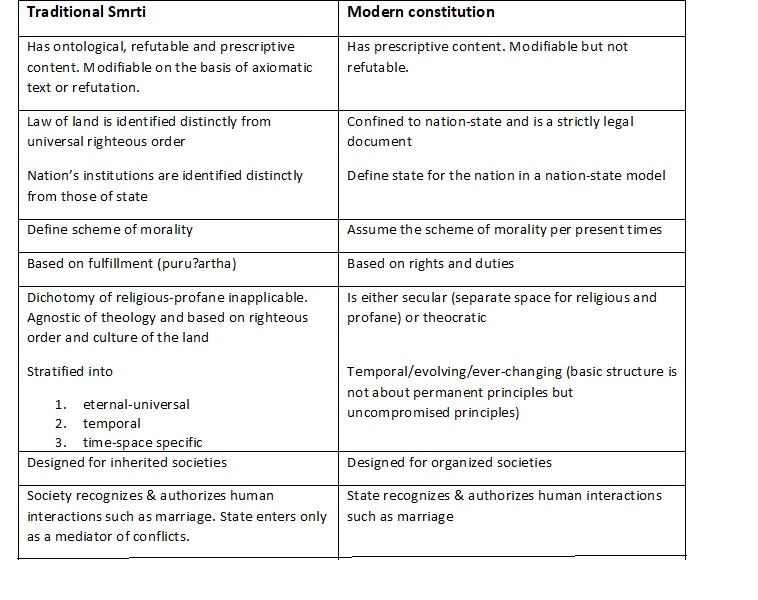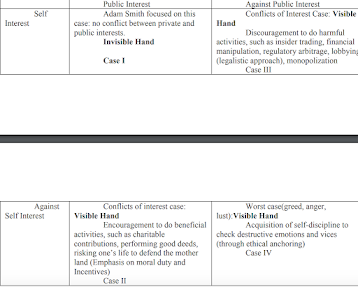Introduction
India represents the longest continuous civilisational experiment in decentralised governance in world history. Long before the emergence of the modern nation-state, Indian villages functioned as autonomous political, judicial and economic communities. Decentralisation in India is not an imported administrative device but a civilisational principle grounded in dharma, duty, and community.
Village Democracy as India’s Governance DNA
The dominant narrative of democracy locates its origins in the Greek city-state, Roman republicanism, or modern European constitutionalism. India followed a distinctly different trajectory. Here, democracy did not emerge from urban assemblies or aristocratic estates; it arose from the village. For more than two millennia, Indian villages governed land, irrigation, revenue, justice, education, charity, and social order through dharmic local assemblies rather than centralised state bureaucracies.
Charles Metcalfe famously described Indian villages as “little republics, having nearly everything that they want within themselves”. Unlike Western political systems that concentrated sovereignty in the state, Indian political life distributed sovereignty across thousands of local dharmic communities.
The Classical Foundations: Sabha, Panchayat, and Dharma
Ancient Indian governance operated through sabhas (deliberative assemblies) and panchayats (judicial–administrative councils). These were not informal bodies but legally recognised corporate institutions owning property, enforcing contracts, regulating commons, and adjudicating disputes.
Panchayats functioned as the grassroots tier of judicial authority, settling most civil and social disputes without reference to royal courts. The king was not the daily administrator of society but the custodian of dharma.
Dharma served as the ethical foundation of this decentralised order. Unlike modern legality, which depends on coercive enforcement, dharmic governance relied on shared moral obligation and social consensus. Compliance was secured through legitimacy rather than surveillance.
Epigraphical Foundations of Village Self-Governance
Beyond textual sources, India’s decentralised governance system is **directly attested through hundreds of temple and land-grant inscriptions**, making it one of the best-documented pre-modern local governance traditions in the world.
The Uttaramerur Inscription (c. 920–930 CE)
The most famous documentary evidence of village democracy is found in the Vaikuntha Perumal Temple inscriptions at Uttaramerur (Tamil Nadu), issued during the reigns of Parantaka I and subsequent Chola rulers. These inscriptions provide a complete constitutional blueprint of village governance.
They record:
- Ward-wise village organisation (kudumbu system)
- Electoral selection through Kudavolai (lottery)
- Strict eligibility qualifications (property ownership, Vedic education, tax compliance)
- Severe disqualifications (corruption, moral misconduct, audit failure)
- Functional committees for irrigation, tanks, justice, temples, revenue, and charity
- Mandatory public auditing of accounts
- Rotation, recall, and disbarment mechanisms
Other Major Epigraphical Records of Local Governance
1. Chola Nadu Tank Committees – Inscriptions from Tirukkalukkunram, Tiruvallur, and Tiruchirapalli record technical irrigation committees with punishment for negligence.
2. Karnataka Brahmadeya and Devadana Inscriptions – Village assemblies managing tax exemptions, water rights, and temple economies.
3. Andhra Satavahana and Ikshvaku Inscriptions – Local guilds and village arbitration councils (nigamas and gramikas).
4. Western Indian Copper Plate Grants (Guptas, Maitrakas) – Autonomous village land administration and dispute settlements.
5. Kerala Temple Sabha Inscriptions – Deeply decentralised temple–village financial governance networks.
Together, these records confirm that:
- Villages possessed corporate legal identity
- Assemblies exercised judicial, fiscal, and administrative authority
- Governance was procedural, rule-bound, and audited
- Power was distributed, not centralised
The Chola Kudavolai System: Ethical Electoral Governance
The Kudavolai system described above represents one of the most sophisticated pre-modern electoral systems in world history. Candidates were selected through lottery only after clearing strict moral, educational, fiscal, and social qualifications. Disqualifications included corruption, abuse of office, financial irregularities, and moral misconduct. Committees managed irrigation, land revenue, justice, temple administration, and public works under strict public audit.
This system integrated:
- Moral filtration
- Randomised anti-factional selection
- Continuous public accountability
- Term limits and recall
Modern democracies continue to struggle to achieve this combination simultaneously.
Colonial Disruption and the Dismantling of Village Sovereignty
British colonial rule fundamentally disrupted India’s decentralised equilibrium. Through the Permanent Settlement, Ryotwari, and Mahalwari systems, land revenue was centralised, and villages were converted into instruments of extraction rather than self-governing communities.
Village courts were weakened, customary law delegitimised, and Panchayats reduced to advisory bodies. Maine himself later lamented that the village institutions which had survived centuries of political upheaval were severely weakened under modern administrative centralisation (Maine, 1871).
Early Twentieth-Century Revival Experiments
A. The Aundh Experiment (1939–48)
The princely state of Aundh adopted the most radical decentralisation experiment in modern India. Through the Aundh Panchayat Constitution (1939), the ruler voluntarily transferred all authority—administrative, fiscal, and judicial—to elected village panchayats. The state existed only as a federation of self-governing villages. Gandhi described it as the closest living embodiment of Gram Swaraj.
B. Baroda State Reforms (Sayajirao Gaekwad III)
Baroda pioneered compulsory education, village courts, local boards, and decentralised administration between 1900–1930, building institutional capacity long before Independence.
C. Maratha & Princely State Experiments
Kolhapur, Indore, and Mysore expanded village self-governance in sanitation, education, public health, and legal access.
D. Bengal & Chittagong Local Self-Government Acts (1919–1930s)
The Montagu–Chelmsford reforms institutionalised district and union boards across Bengal and eastern India.
E. Travancore & Cochin (Kerala)
Kerala’s later democratic depth drew directly from early village institutions in health, education, and land governance developed during the princely period.
Gandhi’s Gram Swaraj and Moral Decentralisation
For Gandhi, swaraj meant ethical self-rule, not mere administrative devolution. Political power without self-restraint produced exploitation. True freedom required villages to be economically self-reliant, politically autonomous, and morally disciplined (Gandhi, 1909/1938). Authority was inseparable from service.
The 73rd Constitutional Amendment as Civilisational Restoration
The 73rd Amendment (1992) constitutionally recognised Panchayats as “institutions of self-government,” establishing the Gram Sabha as the foundation of rural democracy. While framed as a technical reform, it represents a delayed civilisational restoration of India’s ancient village sovereignty.
Rudolph and Rudolph (1987) interpret this as the re-emergence of “negotiated authority,” where modern institutions operate through continuous engagement with social traditions rather than their displacement.
Diagnosis: Structural Weaknesses of Contemporary Panchayati Raj
Despite constitutional status, today’s Panchayats suffer from:
1. Limited fiscal autonomy
2. Misalignment of functions, funds, and functionaries
3. Ritualised rather than deliberative Gram Sabhas
4. Weak administrative capacity
5. Elite capture and micro-clientelism
6. Fragmented accountability
7. Disconnection from moral legitimacy
8. Collapse of local dispute resolution
9. Short planning horizons
10. Weak enforcement of social audits
Reforming Panchayati Raj: A Civilisationally Anchored Framework
Immediate Measures
Mandatory Gram Sabha clearance, enforceable social audits, Kudavolai-inspired committee selection, commons registries, village mediation panels.
Medium-Term Reforms
Statutory 3F alignment, own-source revenues, performance-linked grants, Panchayat secretariats, women’s leadership pipelines.
Long-Term Structural Reforms
Village judicial systems, decentralised education governance, binding State Finance Commissions, constitutional clarity on village powers.
These align closely with Ostrom’s core principles of durable self-governance.
Conclusion: From Stone Inscriptions to Constitutional Law
From the stone pillars of Uttaramerur to the text of the Indian Constitution, India’s decentralised governance tradition reveals an uninterrupted civilisational memory of village sovereignty. Ancient sabhas, epigraphical Panchayat constitutions, Chola electoral ethics, Aundh, Baroda, Gandhian Swaraj, and the 73rd Amendment together affirm one truth:
Indian democracy is strongest when it flows upward from the village, not downward from the state.
Its renewal today is not nostalgia—it is institutional realism grounded in two millennia of governance practice.






